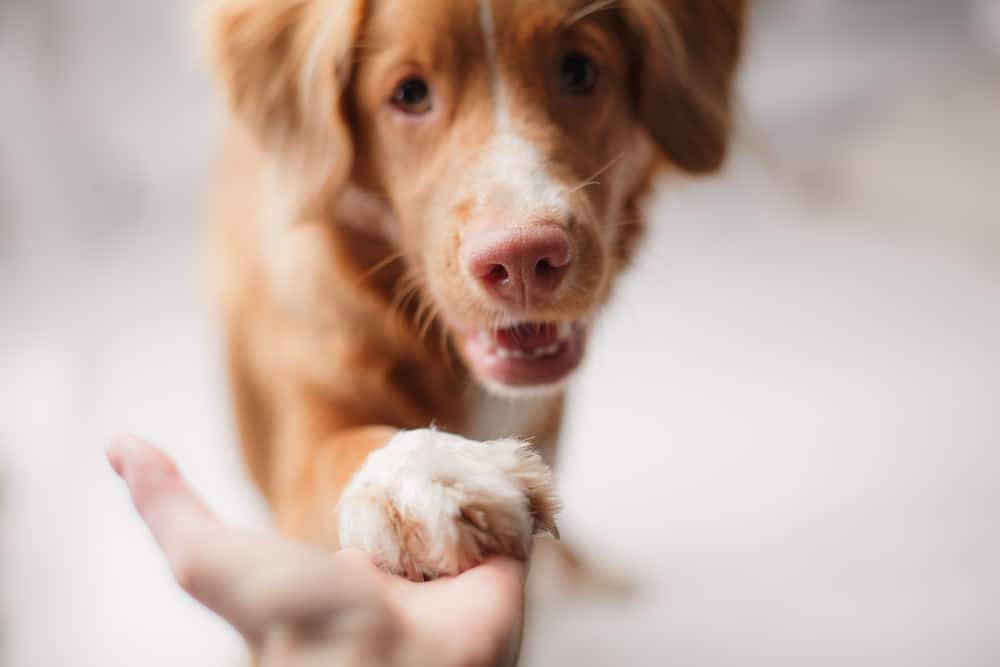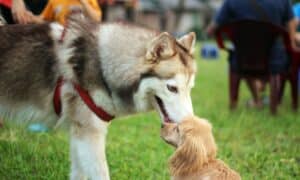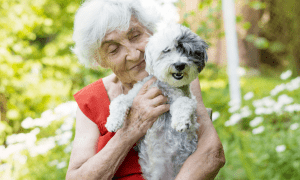“This post contains affiliate links, and I will be compensated if you make a purchase after clicking on my links.”
It’s quite common for people to have the best intentions of being friendly towards a dog, and yet, inadvertently come across as rude, annoying, or threatening when it comes to the dog’s natural instincts and perceptions.
Those who work professionally with dogs have learned that there is, in fact, a fine art to using our body language to help our furry friends feel at ease and comfortable around you. When we unintentionally create intimidating or erratic cues with our body language, it can result in a frightened, confused, or even aggressive dog. A disconnection between what we are trying to say and what our body language is expressing can be a source of considerable discomfort for them.

Here are some key differences in our body language versus our dog’s perceptions of them, as well as some tips for improving the connection.
Making eye contact
Culturally, making direct eye contact is typically well-tolerated and even admired. When a person avoids eye contact, they are usually perceived as being shy, untrustworthy, lacking in confidence, or even just plain rude. We, therefore, seek to make eye contact with our dog to create a sense of connection and warmth. Unfortunately, however, dogs don’t see it that way! For dogs, direct eye contact is perceived as a threat or challenge, whilst gently looking away is a sign of respect or deference.
Tip – When approaching a new dog, or if your own pooch seems a little wary when you approach them, try looking off over their head or to the side, instead of directly into their eyes. If the dog seems comfortable, you can try to make brief, gentle eye contact and see how they react. If their body language remains relaxed and they continue to approach you in return, they may be comfortable with a small amount of eye contact, but take it slow.
Immediately petting or making hand contact
As humans, when we are first introduced to someone new, we will typically extend our hand and engage in a nice, firm handshake. Similarly, then, when we approach a dog, we tend to attempt to touch them immediately, often reaching out and boldly patting them on top of their heads. Some dogs may not mind it, some will tolerate it, but many dogs do not like it at all, which makes sense when it comes to their natural instincts.
Tip – Give a dog an opportunity to familiarize themselves with you before you launch into full blown contact without consent. When meeting a new dog, ideally allow them to offer the first contact. If you must make the first move, reach out gently with your hand open, palm up, keeping it lower than their chin level, and let them advance forward for a sniff. You can then softly scratch them under the chin or behind the ear. If the dog seems unsure, they may not yet be ready for that much physical contact, in which case, respect their message and give them some space to explore further in their own time.
Our body orientation
In much the same way as direct eye contact can feel like a threat to a dog, so too can it feel offensive when a human approaches them with a direct, face-front approach. They can also feel anxious and uncomfortable when we bend or hover over them. When you see a professional dog trainer in action, they will typically kneel sideways and avoid eye contact when befriending a new dog, and often offer an open hand close to the ground.
Tip – Take a leaf out of the pro’s book. The more wary a dog seems, the more it matters that you take the time to avoid coming across aggressively. Turn to the side, make yourself seem smaller, and move gently in a non-threatening way. Of course, if an excitable Labrador comes bounding up to bodyslam you, you can relax a bit and not worry about avoiding a front-on approach – but it is still best to avoid head pats and hovering over them.
Generally speaking, becoming more aware of how your physicality affects your dog is a great way to start. Sudden or erratic movements can alarm them and put them on edge. They may tolerate hugs, but do they actually feel completely at ease being so restricted? Take the time to notice your dog’s subtle cues and find ways to make them feel as secure and calm as possible.
Final thoughts
Despite our great love for each other, humans and dogs have surprisingly different needs and perceptions when it comes to body language. Learning more about how best to communicate with them and make them feel more at ease can only add to the special bond that we share with our beloved furry friends.
About the Author:
Emma is a professional writer and blogger, with two furry friends and a lot of pet behavioral and pet health knowledge to share. She has written for numerous big animal magazines and health sites, and is a regular contributor to The Catington Post.























